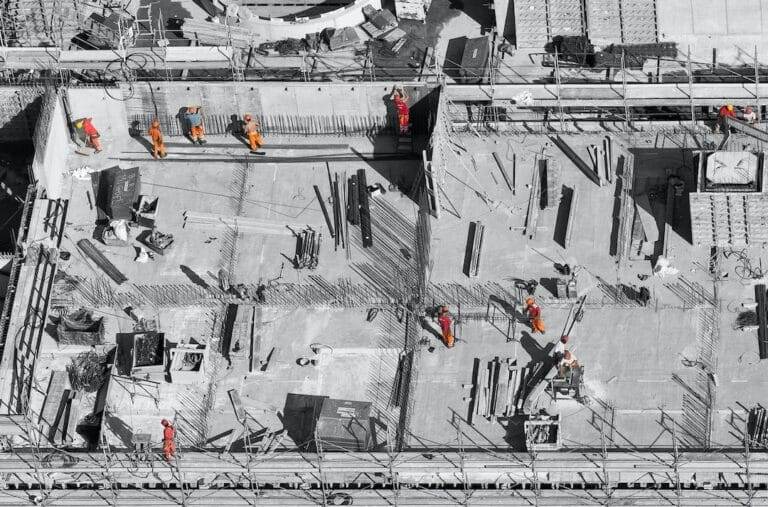Importance of Post-Construction Cleaning
After the dust settles and the final touches are added to a newly constructed dental facility, the crucial phase of post-construction cleaning begins. This step is not merely a cosmetic finish; it lays the groundwork for a safe, welcoming, and hygienic environment for both staff and patients. In some cases, the hustle and bustle of construction can leave behind hazardous debris and contaminants. In the dental field, cleanliness is paramount. Failing to address these issues can lead to poor first impressions, potential health risks, and costly downtime. In other words, post-construction cleaning is essential for:
- Ensuring compliance with health standards
- Creating a welcoming atmosphere for patients
- Maintaining the integrity of sophisticated dental equipment
- Preventing contamination risks
It’s reminiscent of a story shared by a dental facility manager who completed a significant renovation. Upon inspection, they found layers of dust in areas that were supposedly cleaned. This not only delayed their opening but also resulted in redoing certain sections of the cleaning. It was a costly lesson that underscored the need for a thorough post-construction cleaning approach right from the start.
Scope of Post-Construction Cleaning Services
The scope of post-construction cleaning services should cover multiple aspects to ensure a comprehensive clean. Effective services typically include:
- Debris Removal: Eliminating construction waste, including wood, nails, and excess materials.
- Dusting: Thorough dusting of surfaces, including vents, light fixtures, and equipment.
- Floor Cleaning: This includes vacuuming, and mopping.
- Window Cleaning: Spotting and cleaning windows to provide a clear view and improved natural light.
- Sanitization: Disinfecting surfaces, especially in areas prone to health risks, such as waiting rooms and operatories.
Considering the unique requirements of dental facilities, expert cleaners often customize their approach, using techniques that leave facilities sparkling clean and primed for operations. This level of detail not only fosters a conducive atmosphere but also sets the tone for a successful practice. By investing in expert post-construction cleaning, dental facilities can ensure they start operations on the right foot, establishing a clean and compliant practice for everyone involved.
Understanding Dental Facility Construction
Common Challenges Faced
Constructing a dental facility is no small feat. It involves careful planning, coordination, and execution to ensure that every element is up to par with stringent health regulations. However, despite meticulous planning, various challenges often arise during the construction phase. One common challenge is coordinating the schedule with multiple contractors. If the plumbing team is delayed, the electrical work may also get held up, leading to extended project timelines. This can be particularly troublesome for dental practices striving to minimize downtime. Personal anecdotes from project managers reveal that unexpected structural issues — like outdated wiring or plumbing — can emerge. One project manager recounted a story where they discovered a significant leak that required immediate attention. This not only escalated costs but also pushed the completion date back, creating a ripple effect on the cleaning schedules and, ultimately, the opening of the facility. Other challenges include:
- Meeting Compliance Standards: Regulatory compliance is non-negotiable in healthcare, and ensuring that all construction meets specific codes can be daunting.
- Material Availability: Supply chain issues can cause significant delays, particularly for specialized equipment and materials.
- Budget Constraints: Keeping costs in check while ensuring quality can lead to tough decisions that affect the overall vision of the facility.
Impact on Cleanliness Standards
The challenges faced during dental facility construction directly impact cleanliness standards. Construction dust, leftover materials, and tools left behind can compromise the sterile environment that dental practices must maintain. For dental facilities, cleanliness isn’t just about aesthetics; it’s a matter of public health and safety. Construction residue can harbor bacteria and viruses, making thorough post-construction cleaning indispensable. In fact, dental practices must adhere to rigorous cleanliness standards to comply with health regulations, making it essential to address these issues before opening. Therefore, establishing a comprehensive plan that includes:
- Regular Cleaning: Scheduled cleaning during the construction phase to reduce the mess.
- Final Inspection: A meticulous walkthrough after construction to identify any overlooked areas that need extra attention.
- Staff Training: Educating staff about maintaining cleanliness levels post-construction.
Navigating the construction of a dental facility is fraught with challenges, yet understanding these hurdles allows for better preparation and a strategic approach to maintaining high cleanliness standards. Being proactive in addressing these issues ensures that new facilities can open their doors to patients on schedule, offering a safe and welcoming environment.
Guidelines for Post-Construction Cleaning
Regulatory Requirements for Dental Facilities
When it comes to post-construction cleaning in dental facilities, regulatory requirements play a pivotal role in shaping the cleaning process. These standards ensure that the environment meets the health and safety regulations essential for protecting both patients and staff. Regulatory bodies, such as the Occupational Safety and Health Administration (OSHA) and the Centers for Disease Control and Prevention (CDC), have established guidelines specific to healthcare settings. One essential aspect is the need for a thorough cleaning and disinfecting process before a facility begins operations. This involves:
- Removing Hazardous Materials: Ensuring that all construction debris, including sharp objects and chemicals, are properly disposed of.
- Surface Disinfection: All surfaces, particularly those that come in contact with patients, must be sanitized using approved cleaning agents that meet CDC guidelines.
- Air Quality Standards: Attention should be given to indoor air quality, ensuring ventilation systems are cleaned and maintained to prevent the spread of airborne contaminants.
Personal experiences from dental practice administrators underscore the importance of compliance. One administrator shared how neglecting these guidelines resulted in the facility having to delay its opening until all issues were resolved, leading to lost revenue and patient trust.
Best Practices for Effective Cleaning Procedures
To ensure that a dental facility meets and exceeds cleanliness standards, implementing best practices for post-construction cleaning is crucial. Here are some effective strategies that can make a significant difference:
- Create a Detailed Cleaning Plan: Outline the specific tasks and areas that need attention. This might include waiting areas, treatment rooms, restrooms, and laboratories.
- Use Quality Cleaning Products: Utilize EPA-registered disinfectants that are effective against a wide range of pathogens. A checklist of these products can be handy for quick reference.Product CategoryRecommended UseDisinfectantsSurfacesFloor CleanersFloorsAir PurifiersAir Quality
- Engage Professionals: Sometimes, it’s best to engage a cleaning service experienced in post-construction cleaning for dental facilities, ensuring tasks are handled using the right techniques and equipment.
- Conduct Post-Cleaning Inspections: After the cleaning is completed, perform a thorough inspection to ensure all areas meet the necessary standards. It’s not just about cleanliness but about building confidence in the facility’s operation.
By adhering to these guidelines and best practices, dental facilities can not only meet regulatory requirements but also ensure a safe and welcoming environment for patients and staff alike, paving the way for a successful opening.
Special Considerations for Dental Equipment
Cleaning and Sterilization Techniques
When it comes to dental facilities, equipment cleanliness is not just a matter of aesthetics; it’s crucial for patient safety. Given the sensitive nature of dental procedures, understanding effective cleaning and sterilization techniques is paramount. Personal stories from dental hygienists highlight how improper cleaning can have serious implications. For instance, one hygienist recounted a case where a sterilization oversight led to delayed procedures and patient anxiety. From that experience, they emphasized the importance of rigorous cleaning protocols following each use. Here are some essential cleaning and sterilization techniques for dental equipment:
- Pre-Cleaning: Before sterilization, all instruments should be pre-cleaned using a detergent solution to remove all visible debris.
- Surface Disinfection: Dental chairs, light handles, and trays should be wiped down with EPA-approved disinfectants after each patient.
Maintaining a checklist can help ensure that every piece of equipment undergoes the necessary cleaning and sterilization steps after each use, significantly reducing infection risks.
Maintenance Tips for Longevity
Regular maintenance is another crucial aspect of caring for dental equipment. Just like a car needs routine servicing to run efficiently, dental equipment requires consistent upkeep to prolong its life and ensure optimal performance. Here are some practical maintenance tips to keep in mind:
- Routine Checks: Schedule regular inspections of all equipment to catch any wear and tear early. This includes checking for loose connections or frayed cords.
- Follow Manufacturer Guidelines: Each piece of equipment comes with its own set of maintenance guidelines. Adhering to these can prevent equipment failures and extend longevity.
- Keep a Maintenance Log: Documenting all maintenance activities helps track what has been done and when, assisting in planning future maintenance.
| Equipment Type | Recommended Maintenance Frequency |
|---|---|
| Handpieces | After every use |
| Sterilizers | Weekly checks |
| X-ray machines | Monthly checks |
- Professional Servicing: Consider engaging professionals for periodic detailed servicing, especially on complex machines like digital X-ray units or dental chairs.
By prioritizing effective cleaning, sterilization, and maintenance, dental facilities can not only enhance patient safety but also prolong the life of their equipment, ensuring a smooth and efficient workflow. These practices form the backbone of a successful dental operation, creating an environment that prioritizes health and professionalism.
Importance of Air Quality in Dental Facilities
Risks of Poor Air Circulation
When considering the overall health and safety of a dental facility, one might overlook the critical role of indoor air quality. However, poor air circulation can lead to a range of health concerns that impact both patients and staff. Personal experiences shared by dental professionals often highlight the discomfort and potential risks associated with inadequate air quality. One dental assistant recounted a day when an HVAC malfunction left the clinic feeling stuffy and oppressive. Patients expressed discomfort, leading to higher anxiety levels, which is the last thing anyone wants in a dental setting. Here are some specific risks associated with poor air circulation:
- Increased Infection Risk: Stagnant air can contribute to the proliferation of airborne pathogens. In a dental setting, where procedures often aerosolize bacteria, compromised air quality can pose significant health risks.
- Asthma and Allergies: Poor ventilation can exacerbate respiratory issues, as dust, mold, and other allergens accumulate. Patients with existing conditions may experience heightened symptoms.
- Diminished Patient Comfort: Uncomfortable environments can cause anxiety for patients, deteriorating their overall experience and possibly influencing their willingness to return.
Strategies for Improving Indoor Air Quality
To mitigate the risks associated with poor air quality, implementing effective strategies for improving indoor air quality in dental facilities is crucial. Here are practical steps to consider:
- Regular HVAC Maintenance: Schedule routine checks and filters changes for HVAC systems to ensure optimal operation. Dirty filters can reduce airflow and increase airborne particles.
- Use Air Purifiers: Incorporating high-efficiency particulate air (HEPA) filters can capture up to 99.97% of airborne particles, significantly improving air quality in treatment areas.
- Ventilation Improvements: Ensure adequate ventilation by keeping windows open when possible and using exhaust fans to remove stale air. This is especially important in treatment areas where procedures take place.
- Green Cleaning Products: Utilize eco-friendly cleaning products that minimize the release of volatile organic compounds (VOCs), which contribute to indoor air pollution.
- Monitor Humidity Levels: Maintaining optimal humidity levels (between 30-50%) can help prevent mold growth and the proliferation of dust mites.
| Strategy | Benefit |
|---|---|
| Regular HVAC Checks | Increases efficiency |
| Air Purifiers | Reduces airborne pathogens |
| Proper Ventilation | Promotes fresh air circulation |
By prioritizing air quality, dental facilities can create a more comfortable, safe, and inviting environment for patients and staff. Addressing indoor air quality concerns not only enhances the patient experience but also underscores a facility’s commitment to health and well-being. A breath of fresh air can make all the difference in providing excellent dental care.
Choosing the Right Cleaning Products and Equipment
Eco-Friendly Options for Dental Facilities
In an age where sustainability is increasingly relevant, selecting eco-friendly cleaning products for dental facilities is not only a smart choice but also a necessary one. These products help maintain a clean environment while minimizing harm to the planet and promoting healthier indoor air quality. A dental practice manager once shared her transition to eco-friendly cleaning options. After noticing that standard products caused irritation among patients and staff, she made the switch. Not only did her facility experience fewer allergic reactions, but they also received positive feedback from environmentally-conscious patients. Here are some eco-friendly options to consider:
- Plant-Based Cleaners: These cleaners are biodegradable and often free from harmful chemicals, making them safer for both patients and the environment.
- Vinegar and Baking Soda: A natural and effective combination for removing stains and odors, this duo is perfect for cleaning many surfaces found in a dental facility.
- Non-Toxic Disinfectants: Many brands now offer disinfectants made from natural ingredients that are as effective against bacteria and viruses as their chemical counterparts.
When considering eco-friendly products, it’s essential to look for certifications such as the Green Seal or EPA’s Safer Choice label, ensuring that the products meet environmental and health standards.
Hiring a Professional Cleaning Service
Benefits of Outsourcing Cleaning Tasks
In the demanding environment of dental facilities, managing cleanliness can be a monumental task. As practices strive to provide top-notch patient care, outsourcing cleaning tasks to professional services can be a strategic choice that brings numerous benefits. One dental practice owner shared her experience after transitioning to a professional cleaning service. Initially hesitant about the cost, she soon realized the time saved allowed her team to focus on patient care rather than scrubbing floors. The result? Enhanced patient satisfaction and improved staff morale. Here are a few key benefits of outsourcing cleaning tasks:
- Expertise and Training: Professional cleaners are trained in the best practices and techniques specific to healthcare settings. This ensures that all areas, especially those requiring sterilization, are cleaned correctly.
- Time and Cost Efficiency: By outsourcing, staff can devote their energies to core responsibilities, enhancing overall productivity. Plus, avoiding costly cleaning equipment purchases and maintenance means that outsourcing can often be more economical.
- Consistent Quality: Reputable cleaning services follow a systematic approach, ensuring that the facility is cleaned to a high standard consistently. This reliability helps maintain a pristine environment that is so vital in a dental practice.
Factors to Consider When Selecting a Cleaning Company
Choosing the right professional cleaning service requires careful consideration. It’s not just about cost; factors such as reputation, experience, and compatibility with your facility’s unique needs play a crucial role. Here are some important factors to contemplate:
- Experience with Dental Facilities: Ensure the cleaning company has specific experience working in dental or healthcare settings. This familiarity with the regulations and requirements is crucial for maintaining a sterile environment.
- Certification and Insurance: Verify that the company is insured. This protects your facility from additional liabilities should accidents occur during cleaning.
- Customized Cleaning Plans: Look for a service that is willing to create a custom cleaning plan tailored to the specific needs of your practice, whether that involves daily cleaning, periodic deep-cleaning, or specific infection control protocols.
- References and Reviews: Seek feedback from other dental practices that have successfully used the service. Positive reviews and testimonials can provide insight into the company’s reliability and overall performance.
| Factor to Consider | Importance |
|---|---|
| Experience with Dental Facilities | Ensures knowledge of healthcare standards |
| Certification and Insurance | Protects against liabilities |
| Customized Cleaning Plans | Meets specific cleanliness and hygiene needs |
| References and Reviews | Offers insight into the company’s performance |
By outsourcing cleaning tasks to a professional service, dental facilities can ensure they maintain a high standard of cleanliness, enhance patient satisfaction, and allow staff to focus on providing excellent care. Finding the right cleaning partner is essential to creating a safe, comfortable, and welcoming environment for everyone involved.
Master Clean Bay Area specializes in providing top-tier post-construction cleaning services tailored to healthcare facilities, including dental practices. With a keen understanding of the unique cleanliness standards required in such environments, their expert team ensures that no detail is overlooked. Whether it’s removing construction debris, sanitizing high-touch surfaces, or polishing floors and windows, Master Clean Bay Area delivers a meticulous approach that guarantees compliance with health regulations. Their dedication to quality not only helps dental facilities maintain a safe and sterile environment but also ensures a welcoming atmosphere for patients and staff alike.






